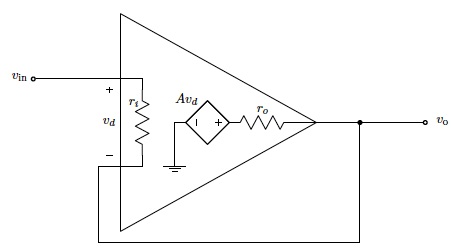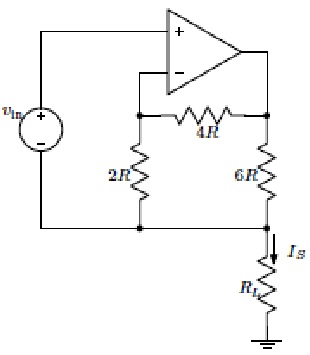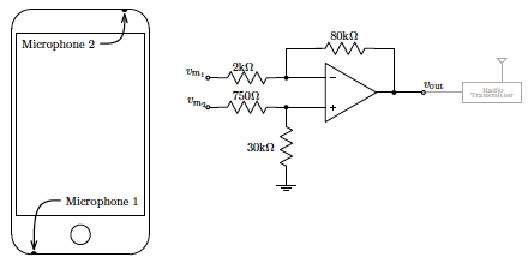Assignemnt:
1. For the voltage follower below
(a) Determine the voltage gain when the op-amps is ideal.
(b) Determine the exact voltage gain when A = 105.

2. The following circuit is a more accurate model of a voltage follower from question 1. Derive an expression for the voltage gain and calculate the exact gain when ri = 100kΩ, ro= 200Ω and A =105.

3. For the circuit below assume that the op-amp is ideal.
(a) Derive an expression for the current Is in terms of vin and the resistors.
(b) Explain how this circuit can be used as a voltage dependent current source.

4. Modern mobile phones make use of noise cancellation technology to reduce the amount of audio noise. Audio noise is essentially any audio signal that we do not want to be heard by the person on the other end of the line. Manufacturers achieve this by using two microphones and a differential amplifier as shown in the figure below. Microphone 1 is close to the users mouth and picks up the users voice plus the background noise, while Microphone 2 is further from the mouth and can only pick up the background noise. The two microphones convert the audio signals to small voltages vm1 and vm2 as shown in the circuit below. After differential amplification the signal is passed to the radio transmitter circuit.

(a) Derive an expression for vout as a function of vm1 and vm2.
(b) During a conversation, there is a. brief moment when the users voice is 100Hz and the background noise is 10kHz. During this moment. the microphone voltages are vm1= 20 cos(102t)+ 2cos (104t)m V and vm2 = 1.95 cos(104)mV. Write an ex-preasion for vout as a function of time.
(c) Was the differential amplifier effective in. reducing the noise signal? Explain your answer.